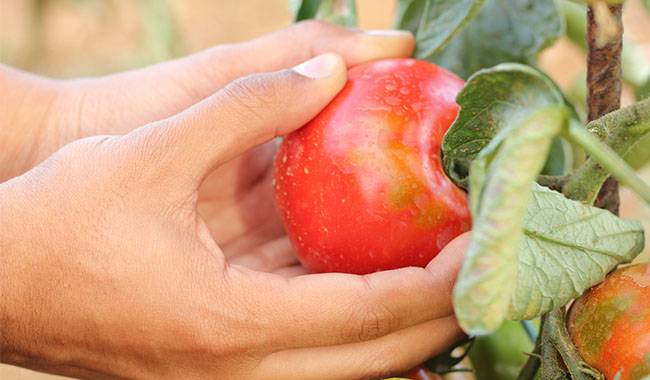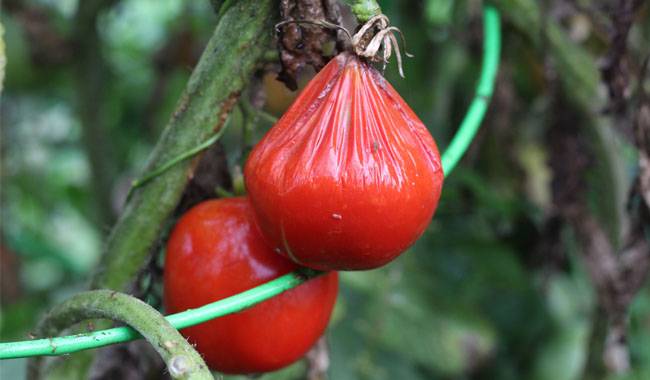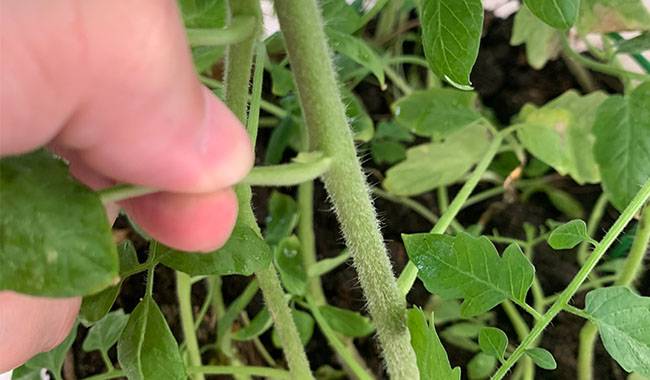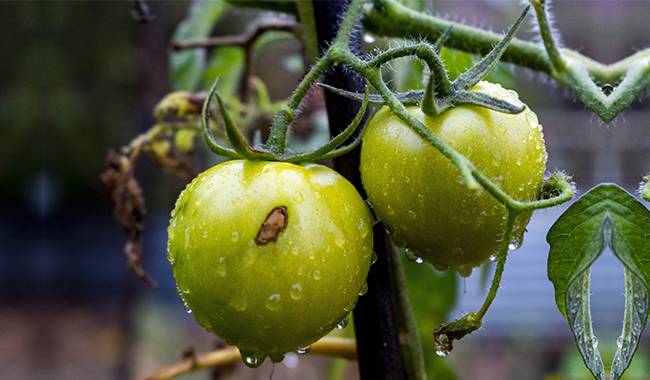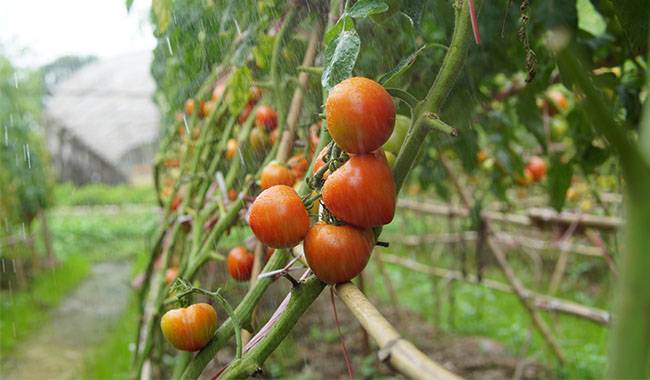
The key to high tomato yields lies not only in sowing seedlings in a timely manner and planting them in an open field or greenhouse, but also in properly caring for the tomato plants throughout the growing season until harvest. Only when you do everything correctly and without the interference of external conditions. Such as hurricanes, hail, etc. Can you be assured of a delicious and healthy tomato harvest.
Today, let’s talk about the main mistakes of growing tomatoes in the open field as well as in the greenhouse. Let’s get a firm understanding of what must be done and what is undesirable or even impossible, apply this knowledge to your area and we will receive high yields of tomatoes every year.
MISTAKE #1. WHY GROW TOMATO HYBRIDS IF THE VARIETIES ARE AVAILABLE?
In fact, this misconception is so popular that many gardeners still buy a variety of tomato seeds exclusively, despite the fact that breeding efforts are now primarily aimed at obtaining tomato hybrids. Why?
Some people are simply afraid and do not understand the rather simple word hybrid, and some know that there is no point in collecting seeds from hybrids and therefore save money by growing outdated varieties year after year that have small, average tasting fruit and only ripen in certain years because they are usually killed by phytophthora.
In fact, the savings are even more questionable; tomato seed is cheap by current standards, but it is a hybrid variety that will give you a solid harvest and delicious fruit, which will most likely ripen not on a windowsill but in a bush, as they are more resistant to many diseases and unpredictable weather than outdated varieties.
Of course, we don’t recommend giving up growing tomato varieties on your plot altogether, but we do want you to experiment more and give a portion of your plot to hybrids to compare, evaluate and make conclusions.
MISTAKE #2. DO THE SEEDS OF TOMATO HYBRIDS GERMINATE TOO?
Of course, they will germinate, but they will not be of much use. This is in the first generation, when you sow tomatoes from the beautiful package, growing such solid bushes that give the neighbors an enviable crop. But in the second case from those seeds that you separate from the tomato fruit and sow, there will already be a strong deviation.
Of course, there is always a place for miracles, and individual seedlings will turn out beautiful plants, but most of them will disappoint you greatly. You want to collect seeds and grow varieties, but we have already mentioned above the disadvantages of varieties.
MISTAKE #3. GREENHOUSE TOMATO HYBRIDS? I DIDN’T KNOW THERE WAS SUCH A THING…
Most gardeners grow tomato seedlings without even thinking that the variety or hybrid is recommended for growing in a greenhouse or open field. And often something ridiculous happens – varieties or hybrids recommended for growing in greenhouses are grown in the open and vice versa.
This may seem like a small thing, but it’s not so simple. Let’s say low-growing tomatoes, which have nothing at all to do in a greenhouse, will have most of the space above their “heads” empty, with a place for vigorous varieties and hybrids.
Conversely, tomato hybrids and varieties recommended for use in greenhouses are subject to drastic diurnal temperature changes and disease in open fields where there are more negative factors, and poor pollination when it rains.
When buying tomato varieties or hybrids, be sure to read the instructions on their packaging, which will inevitably state: recommended for open fields or greenhouses, otherwise even the best hybrids will not yield a good crop.
MISTAKE #4. I PLANTED BOTH CUCUMBERS AND TOMATOES IN ONE GREENHOUSE!
This is incorrect, if only because these plants are, well, quite different, and they have different requirements. For example, cucumbers need high temperatures and high humidity to fully grow, develop, and therefore produce fruit, but tomatoes don’t need that at all.
Of course, you can always try to split the greenhouse in two and make something like a communal apartment, but then you have to make a separate door and window because tomatoes like frequent aeration and ventilation and aren’t really afraid of it, but cucumbers are just the opposite ……
By all other things, and treatment will need to be carried out differently and at different times, because the plants of the disease are different, therefore, and the time of medication and treatment must also be different. Do you need it?
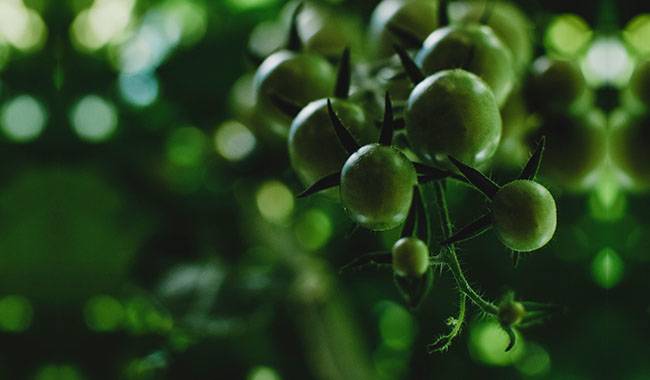
MISTAKE #5. COVERING THE CROP WITH MULCH
Now that we’ve touched on the subject of greenhouses, let’s move on: film selection is an important part of growing tomatoes successfully. Most gardeners want something cheaper, easier, and hopefully rewarding. In fact, the film for greenhouses is about half the battle.
For example, the thickest film is more expensive, but for two or three seasons in a row for careful owners is not very suitable for growing tomatoes: on such a film forms condensation, which drips on the leaves and creates a favorable atmosphere for the growth of tomato phylloxera.
An ideal variant is a hydrophilic non-stable film, which also produces condensation on its inner side, but it does not drip, but flows down and does not get on the leaves and fruits. In addition, such a film is better washed by rain, dust does not accumulate on it and it “holds” the temperature better.
MISTAKE #6. THE LATER THE BETTER!
This is another common mistake made by gardeners: fearing frost and wanting the tomatoes they plant to produce fruit, they keep the seedlings until they are planted for a very long time. In fact, given the late sowing, planting overgrown tomato seedlings or planting seedlings that are normal but late in the season results in delayed growth and development, and therefore a decrease in yield and its quality. The tomato fruit just doesn’t have time to ripen properly and by late summer or even fall, what quality and flavor can you talk about?
MISTAKE #7. THE MORE YOU PLANT, THE MORE YOU GET!
Small vegetable gardens are a problem for many people, and gardeners are eager to “cram” everything and more into a modest little area.
Unfortunately, no crop is wasted, and the same is true for tomatoes – in intensive planting it grows worse, flowers badly bear less fruit, and gets sick more often: because water does not evaporate, air does not circulate and all diseases spread quickly through the leaves – in fact, they do not need to go far…
When growing tomatoes, in order to correctly calculate the planting scheme, it is necessary to start with the growing intensity of the shrubs of a particular variety or hybrid. For example, high-growing tomatoes certainly need to be planted less frequently – only four per 11 square feet of open ground or greenhouse if the soil is nutrient-rich, and only three if it is moderately nutritious.
Medium-growing plants can be planted in as many as four or five pieces in the same area in addition to open ground and greenhouses, but dwarf plants, suitable for growing exclusively in open ground, can be planted and six pieces per 11 square feet of soil.
Specific planting scheme for dwarf plants – 12x24inch (between plants and tomato bushes, respectively), medium-growing plants – 14×28-30inch, strong-growing plants – 16×18-24inch.
However, clever gardeners invented how to save some space without compromising the yield: they did the so-called double planting, i.e. planting tomatoes in two rows on a 20inch wide bed, but in a staggered order, but the distance between such double beds should be 30-35inch (75-90 cm).
MISTAKE #8. TOMATO PRUNING AND SHAPING, WHY?
Tomato plants need shaping, but many gardeners trivially break up what appear to be strong and potentially productive side shoots and prune the tops, resulting in very swollen bushes or shrubs with no fruit at all or only a small amount of fruit.
Given that no more than four brushes with fruit usually form on an open tomato plant, after this fourth brush and the few leaves after it is laid down, you will need to pinch the stem, thus removing the unwanted growth point.
MISTAKE #9. I WOULD HAVE TIED IT TIGHTER!
This mistake is extremely common. When tying tomato stems to a trellis, gardeners often tighten the twine vigorously, which causes a violation of normal stem growth and development, creates shrinkage, and sometimes causes the stem to break. To avoid over-tightening, do not wrap the tomato stems around the twine when twisting.
MISTAKE #10. LEAVING A STEPCHILD BEHIND? I’M GOING TO MAKE IT!
Another common mistake gardeners make is delaying the removal of tomato side shoots, or stepchildren, that grow from the leaf axils (suturing is the removal of shoots that grow on each pair of leaves), which will greatly weaken the plant if all the shoots are left on the bush. It is best to remove the stems when they reach 1.2-1.6inch (3-4cm) in length, but no more, as the plant actively uses water and nutrients to grow and develop these unwanted parts throughout the growth of the stem.
Some people also make the mistake of picking the stems of their tomatoes, leaving their parts, the residue, behind. You should not do this; you must pull the stems as a whole and do it in the morning, if possible, in dry weather without rain or fog.
If you do this, the wound left after removing the tomato stalk will heal quickly. If you leave the stump from the stem, that is, only partially remove the stem, then various microorganisms, more often pathogens, may settle on its surface and begin to actively multiply.
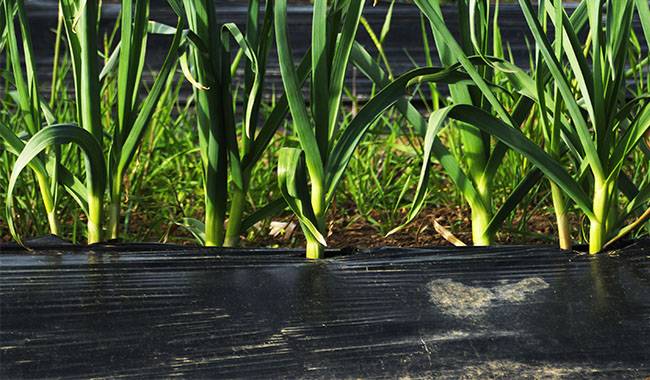
MISTAKE #11. REMOVE MORE LEAVES – THE NUTRIENTS GO TO THE FRUIT!
This is a common misconception, although there is a small amount of truth in it. Defoliating or removing tomato leaves does help increase fruit quality and speed up ripening to some extent, but only if the lowest (bottom) leaves are removed, not the others.
If you indiscriminately remove all leaves, especially after irrigation or rain, as many do, the evaporative area will be greatly reduced, the basic photosynthetic process will be slowed down rather than nourished, and more water will flow to the fruit, which will likely cause them to crack and have a poorer flavor in the background.
It is also safe to remove the bottom three leaves, especially if there is too much water in the soil, to remove leaves that have turned yellow and therefore do not “work”, or those where damage and insect infestation may occur. Remember, no more than three tomato leaves should be removed at a time; if more leaves need to be removed, it is best to postpone the operation until the next day.
MISTAKE #12. THE MORE FERTILIZER, THE BIGGER THE FRUIT!
Another extremely common mistake is to violate all possible times and doses when fertilizing tomatoes. Basically, overfeeding causes the plants to be overly “greasy” and they form very strong shoots and huge leaves, completely forgetting what fruit should be formed.
For example, when you apply manure to tomatoes, you can see an aggressive greasing. In addition to nutrient overload, nutrient deficiencies can also occur – for example, gardeners don’t always pay attention to the presence of important micronutrients such as magnesium in the soil. A lack of magnesium in the soil affects the leaves, with yellow areas appearing between the veins, photosynthesis being disrupted, and yield and quality suffering.
The smaller lower leaves are affected first by magnesium deficiency and then necrosis progresses upward. If you notice typical magnesium deficiency symptoms in tomatoes, foliar spray with a 4-5% magnesium sulfate solution every other week until the symptoms are completely eliminated.
MISTAKE #13. MORE WATER – THE TOMATOES WILL BE SWEETER!
Probably, everyone has heard this advice from a neighbor? But is he right? Of course not: too much water does not like any plant, including tomatoes, either in the open ground or in the greenhouse, contrary to popular belief. All you achieve by watering tomatoes so is the rotting of the root system and the appearance of a series of fungal diseases on the leaves and fruits.
Tomatoes in the closed ground should be watered weekly, and in the open – depending on whether there is rain: if there is no rain, then twice a week, and if there is – less often. Watering should be infrequent but adequate, using settled water at room temperature and watering it under the bushes, not on the leaves.
Of course, moisture is important, especially in the first 10-12 days after planting, but you shouldn’t let the soil dry out: you need to stick to the golden rule. If you are growing tomatoes in a house in the country, going once a week on weekends, and are afraid that the summer heat will dry out the soil to the point that the tomatoes won’t survive until the next weekend, be sure to mulch, or cover, the soil after watering.
As a mulch, you can use anything – humus, dry soil, white mulch, chopped grass, or even plain pieces of paper or newspaper.
Keep in mind an interesting feature of tomatoes – they can signal on their own if they have enough moisture. For example, if the edge of the leaf begins to bend upward, forming a boat, this means that there is not enough water and needs to be watered immediately, and if the opposite – twisted, leading the tip of the leaf downward, then watered, while it is not necessary to have a lot of water in the soil. As for the norms of watering, the older the plant, the more it needs water. Depending on the age, the norm under each bush increases from 0.8 Gal (3 liters) to 1.3 Gal (5 liters).
MISTAKE #14. CLOSED THE GREENHOUSE – AND WENT HOME
This is a common mistake of all gardeners – closing the greenhouse tightly before leaving and opening it again a week later, only for the next weekend. This seems to be correct, but in this case, for some reason, the formation of fruit is minimal. The fact that the temperature rises and the lack of cooling in the form of fresh air causes the tomato elements to knit into pollen grains, mediocrity does not pollinate, and without pollination, there is no fruit.
If you grow vegetables in a cottage that you do not visit often, try not to grow tomatoes and cucumbers there, especially single-fruited hybrids, which do not need pollination at all. In all other cases, you will have to open the greenhouse to lower the temperature in it.
MISTAKE #15. MEANS OF PROTECTION? WHAT DID IT DO?
Why indeed, because the fruit can be picked green, as long as the plant “covers” phylloxera and tries to finish the dose and get the mediocre taste of “maroon miracle”. Seriously, tomatoes should be treated every 10-12 days, both in the greenhouse and in the open field. It is good if you use biological preparations for this purpose, it protects the plant without damaging the environment.
In the same case, if biological preparations can no longer be saved, you can use various folk remedies or preparations based on copper, and if this also does not help, then resort to the help of fungicides and insecticides, which must follow the instructions on the package, do not exceed the dose and do not violate the terms of treatment.
Conclusion. Here, in fact, there are all the mistakes that can be made when growing tomatoes, and if you have any questions, then write to us in the comments and we will try to answer in detail.
More related information about growing tomatoes plants




